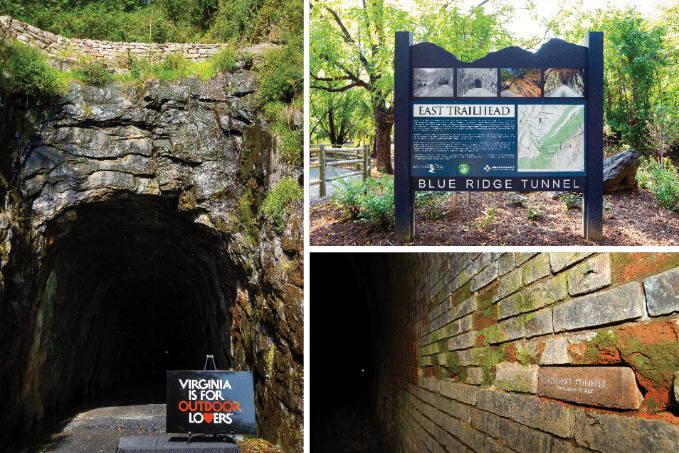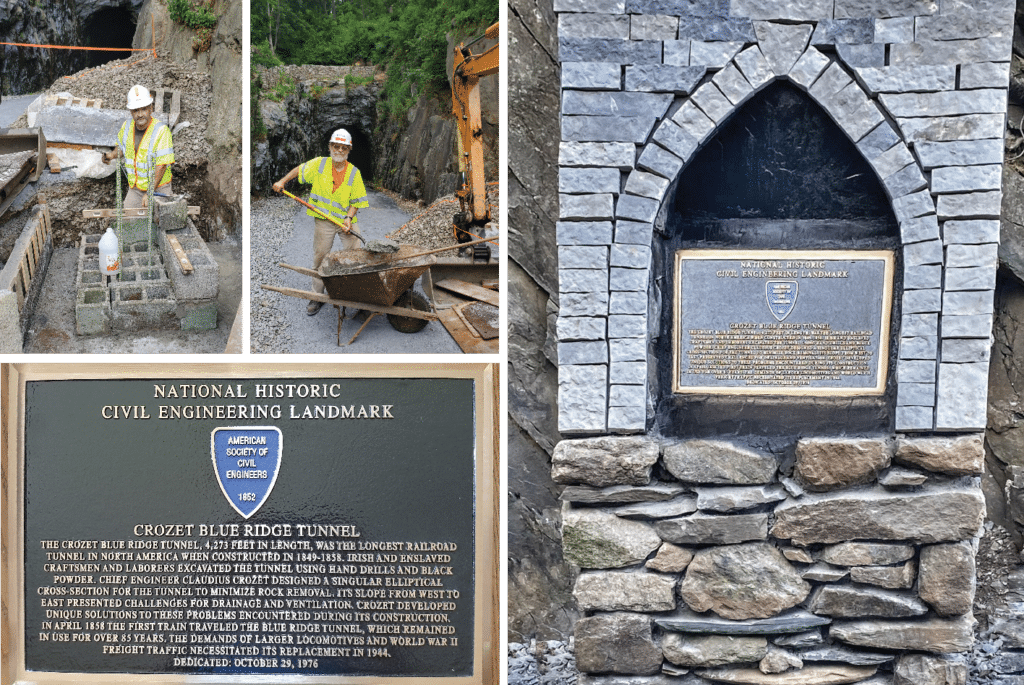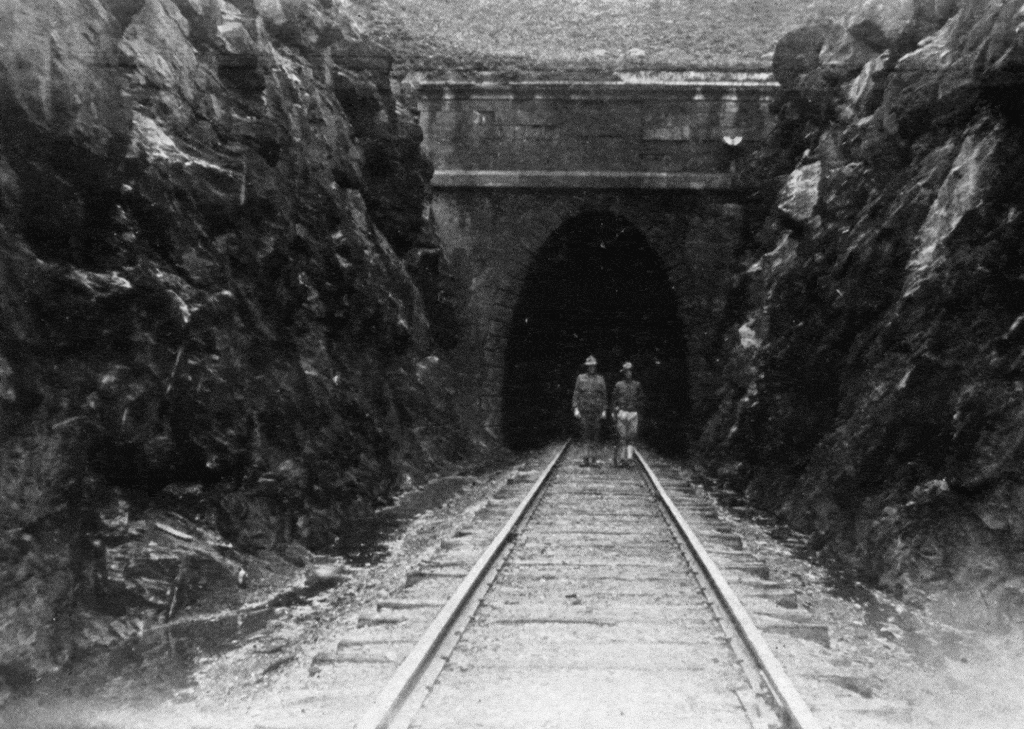After nearly 20 years of planning, design, and construction, Virginia’s Claudius Crozet Blue Ridge Tunnel opened to the public on November 21, 2020. Over 8,000 visitors have explored the tunnel and its access trail since the opening. This recreational and educational treasure is located at the convergence of Albemarle, Augusta, and Nelson counties.
The 2.25-mile tunnel trail is near Waynesboro’s greenway trail along the South River. It is hoped that the tunnel trail can be extended to connect to Waynesboro’s trail system to the west and nearby trails in Albemarle County, connecting the three counties and allowing community members and tourists to safely explore the historic area. The nearly-mile-long tunnel remains unlit, so visitors are encouraged to come prepared with a flashlight or headlamp.
The 3-phase restoration of this historic landmark began in September 2014 and was completed in November 2020. The Virginia Department of Transportation (VDOT), the Virginia Department of Conservation and Recreation, the National Park Service, the Claudius Crozet Blue Ridge Tunnel Foundation, and myriad other municipalities and organizations contributed to the massive undertaking.
Learn more about the tunnel and the restoration efforts.

ASCE Civil Engineering Landmark
The American Society of Civil Engineers (ASCE) dedicated the tunnel as a National Historic Civil Engineering Landmark in 1976. As part of the recent restoration, ASCE and Nelson County paid for a new plaque to mark the site. The Claudius Crozet Blue Ridge Tunnel (CCBRT) Foundation provided labor and hired a mason to complete a stone pedestal for the ASCE plaque.
Volkert CEI project engineer Wayne Nolde, a member of ASCE and the CCBRT Foundation Board of Directors, coordinated the installation of the pedestal and plaque. Keith Weakley, Volkert Mid-Atlantic region senior vice president and fellow ASCE member, also volunteered to help construct the pedestal.
The restoration project’s contractor, Fielder’s Choice Enterprises, agreed to excavate a hole for the pedestal footing and backfill the excavation after the footing was cast. With a day’s notice, Wayne and Keith—along with a group of VDOT volunteers and friends—jumped into action. Wayne cleaned up the area and fine graded it after the contractor completed the excavation, while others built the forms from donated lumber and tied the reinforcing steel donated by Keith. After the concrete cured, Keith built the base of the pedestal to ground level and prepared the foundation for the mason to finish the project.
“Wayne was a quiet force behind this project,” says Keith. “He was always there in the background pushing and working to make this happen. I do not think things would have come together as well as they did without his involvement.”
The pedestal was completed in November 2020 and sits at the tunnel’s East Entrance.

Tunnel history
The 4,273-foot tunnel was constructed from 1849-1858 to allow the Blue Ridge Railroad to pass through Afton Mountain below Rockfish Gap. At the time, it was the longest railroad tunnel in North America. Learn more about the original design of the tunnel and how chief engineer Claudius Crozet solved unique challenges encountered during construction.
The tunnel housed rail traffic until a new tunnel was opened in 1944, necessitated by larger locomotives and World War II freight traffic. CSX Transportation donated the tunnel to Nelson County in 2007.


